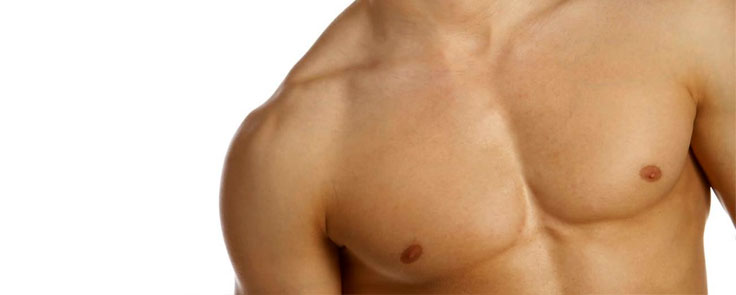
Gynaecomastia
Quite frequently men can have excess fat and/or glandular tissue in the upper chest – called Gynaecomastia. The problem usually affects both male breasts and the aim of the surgery is to achieve a flatter, firmer chest with, where necessary, smaller areolas (the pink area around the nipples).
The surgery is performed under general anaesthetic and according to the type of surgery needed by the individual patient, can involve liposuction, gland and/or skin removal.
To reduce swelling a compression garment needs to be worn for 4 weeks after surgery and a normal routine can be resumed a week after surgery. Pain is moderate to mild and is controlled with medication.
Doctor’s Recommendations
If the patient is in the process of losing weight it is always advisable to perform the surgery when the the patient has achieved his target weight and it is stable. If there is a considerable excess of skin in the chest it is very important to remove this at the same time in order to achieve the best cosmetic result.
Results
Keeping in mind that Gynaecomastia can be the source of psychological problems for the patient, the results of the surgery are usually excellent and self confidence is regained. Complications are infrequent. Revision surgery might be necessary, expecially when skin has to be removed (mastopexy) around the nipples.
If there is a reduction of sensitivity in the areas treated this is usually temporary.
What causes Gynaecomastia?
Gynaecomastia is quite common during puberty and usually disappears after a few months. In adulthood it can be related to the alteration of hormone levels, excessive consumption of alcohol, or the use of anabolic steroids, but in most cases the causes of Gynaecomastia remain unknown.
Will I have to be hospitalized?
In the very few cases where the problem is limited to just a small amount of gland or fat localised under the areolas, the surgery can be performed under local anaethetic with sedation and the patient can be discharged after a few hours. In the more frequent and complex cases where there is a considerable amount of fat and/or gland, with or without excess skin, the surgery is longer, performed under general anaesthetic and an overnight stay is required.
When will I be able to return to normal life?
During the first week, some discomfort is to be expected although this is treated with medication. After 1 week the patient can return to normal life although sports activity cannot be resumed until 3-4 weeks after surgery.
The areas treated should not be exposed at all to the sun for 1 month and thereafter covered with sunblock and a t-shirt for 12 months.
